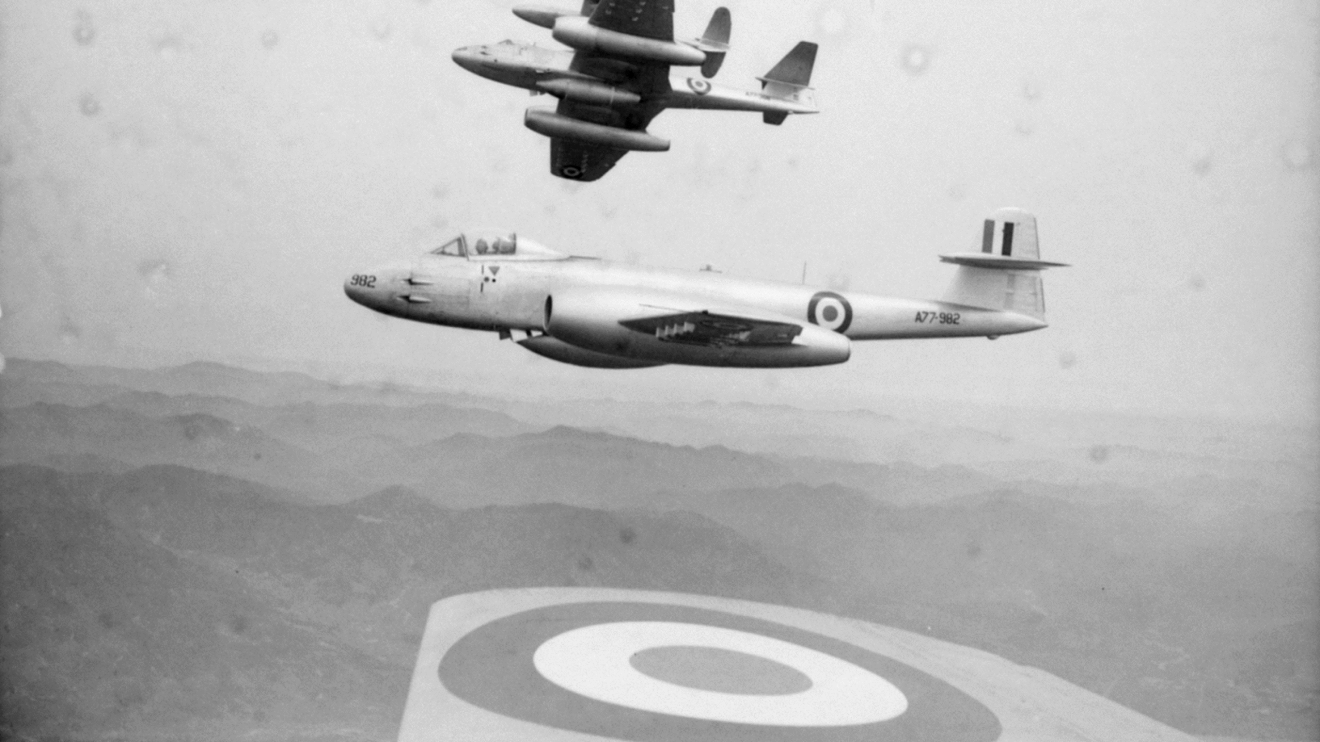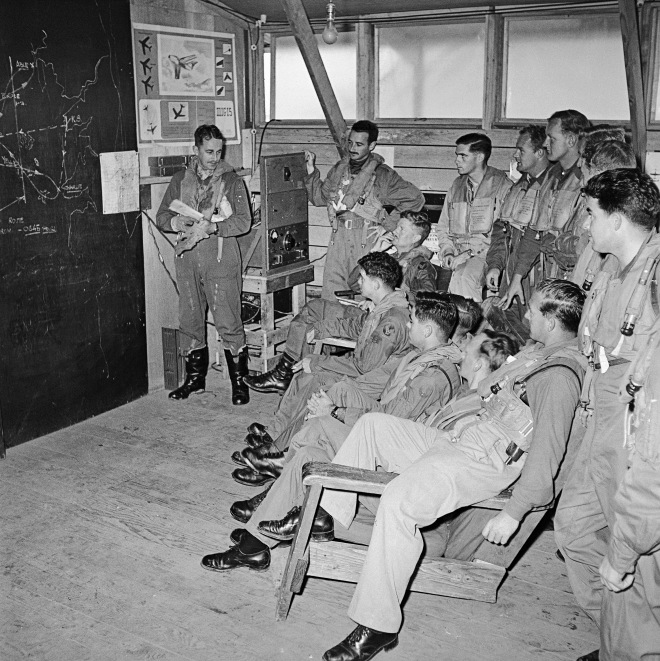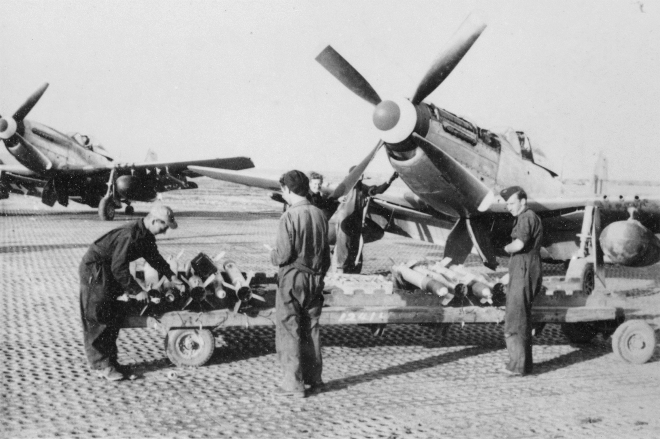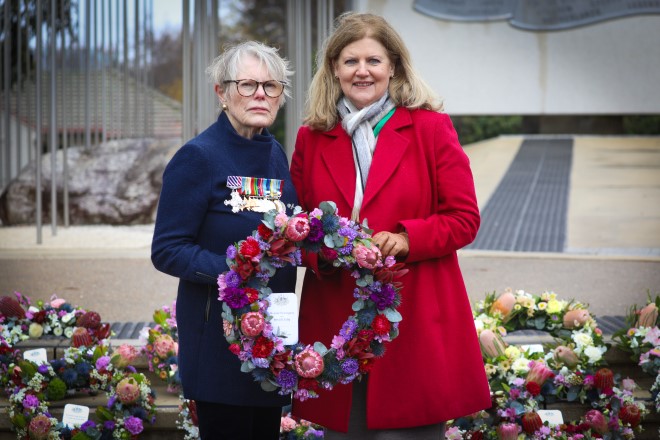RAAF aviators over Korean skies

In late June 1950, the US called on Australia for air support. The Royal Australian Air Force’s (RAAF) No. 77 Squadron was stationed at Iwakuni, Japan, and responded to the call, quickly preparing for war.
On 2 July 1950, pilots of No. 77 Squadron flew ground support operations over Korea, becoming the first non-Korean and non-US unit to join the fight. Over the next 3 years, No. 77 Squadron flew almost 19,000 sorties and made the transition from flying propellor-driven American P-51 Mustangs to jet-engine British Gloster Meteors. The unit focused mostly on close air support and ground interdiction missions but was also engaged in air-to-air combat in the infamous “MiG Alley”.
The courage of Squadron Leader Fred Lawrenson

Among No. 77 Squadron airmen was Squadron Leader Frederick ‘Fred’ James Lawrenson, a recipient of the Distinguished Flying Cross for actions in the Second World War. On 24 December 1952, while leading 4 Meteors on an armed reconnaissance of a main road in North Korea, Fred saw enemy ground targets and descended to strafe them. As he did, his plane was hit by machine gun fire and crashed into the hills below. Fred’s body was never recovered, and he is presumed killed in action.
For his exceptional conduct in Korea, Frederick Lawrenson was awarded the Air Force Cross. In a letter to Fred’s wife, Yvonne, his commanding officer wrote: ‘He was held in the highest esteem by everyone here and he was undoubtedly one of the most popular officers in the Squadron.’ Yvonne never remarried and raised their daughter, Jill, as a single mother. She passed away in 2017.
Two mates flew, one came back
Another Australian who flew with No. 77 Squadron in Korea was Pilot Officer Donald ‘Don’ Campbell Ellis. Don joined the RAAF in 1947 and earned his wings at No. 1 Flying Training School, Point Cook. It was here that he met fellow airman Brian Dorrington, and the pair formed a close friendship. With some persistence, Brian even convinced Don to introduce him to his sister, Adrienne, and a romance developed.

When the war broke out, Brian was posted to Iwakuni flying C-47 Dakotas, which played a major role in transporting equipment, supplies and wounded soldiers between Japan and Korea. Don was already stationed in Japan with No. 77 Squadron and immediately began combat operations in Korea. Over 6 months, Don would take to the air more than 70 times. On 22 December 1950, his plane was shot down by suspected enemy ground fire east of Pyongyang. It was his second-last mission before he was due to return home.
Don’s mother learned of his downing on Christmas Day but held out hope that he could be alive and in captivity. She received an official letter informing her that an American prisoner of war had seen a prison camp guard wearing Don’s identification bracelet, inscribed with his service number, which the guard told him he had retrieved from Don’s body following the crash.
Tragically, Don Ellis’ body has never been recovered, and he is presumed killed in action. For his service, he was awarded the US Distinguished Flying Cross and Air Medal.
Brian Dorrington returned safely to Australia in September 1951 and married Adrienne in January the following year. He enjoyed a long career in civil aviation and passed away in 2021 at 92 years of age.
I served alongside some magnificent men. We understood our duty and worked hard to keep the aircraft running and cargo moving. At the 70th anniversary of the armistice, it was clear how enduringly grateful the South Koreans were for how Australia stepped up to help them.
- John Taylor, RAAF veteran of the Korean War
Missing, but never forgotten

Of more than 40 Australians still missing in action (MIA) in Korea, 18 were pilots from RAAF No. 77 Squadron. Julie Dorrington, daughter of Brian Dorrington and niece of Don Ellis, and Jill Talty, daughter of Fred Lawrenson, served on the Korea MIA Working Group as family representatives. They remain committed to finding and laying to rest the missing servicemen and ensuring those who fought and died during the Korean War are never forgotten.
Both Julie and Jill have made commemorative trips to South Korea. ‘My contact with the Korean people has reinforced that the loss of my father is not in vain given the freedom they experience today,’ Jill says. Julie and Jill attended the National Commemorative Service on 25 June 2025. They laid a wreath in honour of all the missing Australians, including Fred and Don.